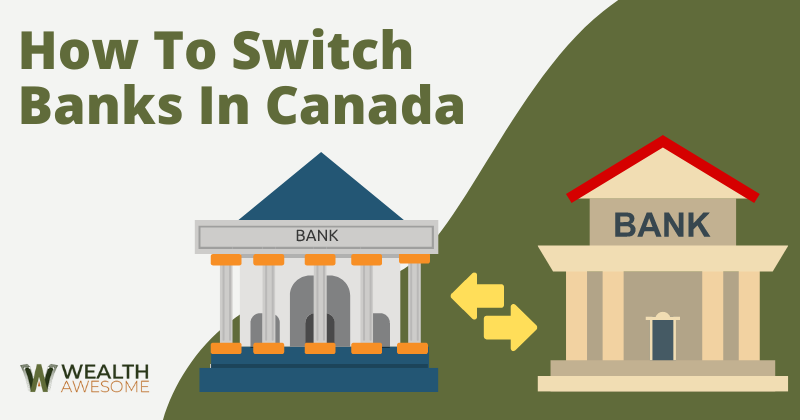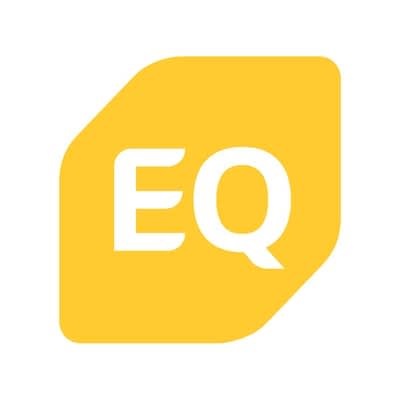According to CBC, over 90% of Canadians believe that banking is more convenient today, largely thanks to new banking tech and online banking. That being said, not everybody is happy with the financial institution they’re banking with.
Although banking is easier than ever, there are also far more options, and not every bank is able to live up to its customers’ expectations.
If you’re getting tired of bogus fees, are experiencing poor customer service, or just need a greater variety of financial products, then you’re in the right place.
Below, I’m going to show you exactly how to switch banks in Canada. I promise it’s not as complicated as you may think it is!
How To Switch Banks In Canada: Step-by-Step
Many people (including myself, in the past) procrastinate when it comes to switching banks. If you’ve never done it before, it can seem like a bit of a headache.
Once you get everything in order, though, it’s a relatively simple process. I recommend handling everything step-by-step over the course of a few days, so you don’t get overwhelmed.
Here’s a quick guide on how to switch banks in Canada!
1. Research Banks & Financial Products
First, identify why you want to change banks in the first place. Take out a notepad and jot down a few of the problems that you’re having with your current bank account.
Then, jot down a few of the things that you’re looking for in your new bank account.
Perhaps you’re looking for a high-interest savings program or investment options so you can put your money to work for you. Maybe you need a simple chequing account with low monthly fees. Or, perhaps, you’re just looking for outstanding customer service.
Whatever the case, make your “shopping list” and start researching banks that fit the criteria.
Once you’ve made a list of your top choices, do a bit of further research and see what the bank’s existing customers are saying. Are most of them happy, or are there a lot of complaints?
- Related Reading: 11 Best Banks In Canada
2. Apply For An Account At A New Bank & Fund It
Once you’ve decided which institution you want to start banking with, it’s time to apply for your account.
If you’re banking online, then you should be able to apply online. Traditional banks may require you to schedule an appointment and speak with a banker in person.
Go over any last questions that you have with your banker to verify that you’re making the right choice, and make your initial deposit (if required) to open the new bank account.
The bank should issue you a temporary card the same day and mail you a permanent debit card within a week.
3. Switch Your Deposits & Withdrawals To Your New Bank
Now comes the tedious part.
You’ll want to go through your past month or two of bank statements with your old bank and make a detailed list of every automatic withdrawal or deposit coming into or going out of your account.
These could include:
- Phone bills
- Utility bills
- Subscriptions (Netflix, Disney+, Apple Music, etc.)
- Credit card payments
- Loan payments
- Your paycheque from your job
- Federal tax credits
- Government aid programs you’re enrolled in
- … and more
It’s important to make the list as detailed as possible.
Next, you’ll want to begin the process of switching these automatic transfers to your new bank account.
I recommend switching over your loan and credit card payments first. You don’t want to miss any of these, as it can negatively impact your credit score.
After these, you’ll want to log into your CRA My Account and change your primary bank account.
This will ensure that your upcoming tax refund, tax credits, and government welfare cheques are sent to your new account rather than your old account.
Then, talk to the HR department at your job and explain that you’re switching bank accounts and need to fill out a new direct deposit form. Otherwise, your paycheque could end up going to the closed account, which could be problematic.
Lastly, switch over your monthly subscriptions, bills, and other accounts that won’t necessarily affect your credit or get automatically shut down if you accidentally miss a payment during the transfer process.
4. Withdraw or Transfer Your Funds From Your Old Bank
Once you’ve switched over all of your automatic withdrawals and deposits to your new bank account, you’ll want to transfer the majority of your funds over to your new bank account.
If it’s just a small amount of money, it may be easier to withdraw the sum from an ABM and deposit it into your new account.
However, if you’re dealing with larger sums of money, transferring the funds electronically is a lot safer. You may just have to pay some additional transfer fees since you’re transferring the money to another institution.
Your e-transfer may also take several days, so make sure to plan ahead for this if you have any upcoming auto drafts.
I still recommend that you leave your old account open for 30 days. Leave a bit of money in the old account to cover any automatic withdrawals that you may have forgotten about.
5. Close Your Old Bank Account
After a month, as long as there’s been no account activity or withdrawals, then you should be safe to close your old bank account.
You’ll usually need to do this in person. Visit the bank, explain that you’ve switched bank accounts and that you wish to close down your account.
The bank may try to offer you special promotional deals to keep you as a customer, which you’re welcome to listen to.
However, you’re under no obligation to accept any offers, and the bank is legally obligated to close your account down unless you owe them an outstanding debt.
Once your old bank account is closed, and all of your bills, deposits, and tax information have been switched over to the new bank account, you should be good to go!
Why Switch Banks?
According to this study, 14% of Canadians don’t trust their bank when it comes to securely handling their money. That’s not the only reason why people switch banks, though.
Some of the top reasons for switching banks include:
- Rising monthly maintenance fees
- Expensive overdraft fees
- Reduced interest rates for savings accounts
- Reduced number of branches where Canadians can bank in person
- New banks and financial products that offer better rates and lower fees (or no fees)
Service Fees
Many of the big-name traditional banks charge monthly maintenance fees, transfer fees, overdraft fees, deposit fees, ABM fees, and more.
The list could go on. An increasing number of new banks are offering no-fee banking, though.
For example, Tangerine is an online bank that offers no monthly fees and allows you to access over 3,500 ABMs in Canada for free.
Customer Service
Raise your hand if you’ve ever been treated rudely by a bank teller or mistreated over the phone…
I’m willing to bet that at least a few of you have had less-than-savoury experiences with your bank.
Perhaps you called to ask for help or visited a branch and had to wait in line for an hour. Although no bank is 100% perfect, switching banks may improve your experience as a customer.
Accessibility
If you’ve recently moved, then you may have noticed that your new city doesn’t have as many ABMs as you’re used to.
This can be a real problem for people who use cash often, as non-network ABMs can rack up charges up to $5 per transaction or more.
If you visit an ABM on a weekly basis, then you may find yourself paying a lot more to use your bank than you bargained for.
Room For Growth
As we grow and evolve, so do our finances. You may have opened your first bank account at 18. Now, you’re 25, have a steady career, and need a bank that offers:
- TFSA savings accounts
- Retirement planning
- Investment options
- Business accounts
Often, your existing bank will be happy to upgrade your account or offer new financial products to you.
However, if they are unable to do so, then you may need to consider switching to a new bank account.
Are There Any Disadvantages To Switching Banks?
As long as you follow the steps above, switching to a new bank account should be a relatively smooth process.
However, there can also be some unexpected downsides if you’re not fully prepared.
Potential Missed Payments
The most common issue that people run into is that they’ll miss payments. You usually won’t be affected by small bills as much as you will be affected by larger bills.
If you miss your Netflix payment, for example, you’ll just receive a friendly email asking you to update your payment information.
However, if you miss your credit card payment or debt payment, then your creditor could report the incident as a missed payment to credit bureaus.
This, in turn, could negatively impact your credit score.
Filling Out New Direct Deposit Forms
If you receive direct deposits from your job, the CRA, or your province, switching your bank account could prevent you from receiving your money.
This is why you’ll want to immediately fill out a new direct deposit form with your boss, as well as the CRA and your aid programs so that they have your latest banking information.
Is There A Fee For Switching Banks?
Generally speaking, most banks don’t charge you a fee for switching banks. However, switching banks can incur some additional costs, such as:
- Transfer fees to move your money from your old bank into your new bank account
- Your initial deposit to open your new bank account
Normally, these fees aren’t very expensive, though. As long as you’re prepared, then they won’t catch you off-guard.
Conclusion – Is It Easy To Switch Banks In Canada?

That doesn’t seem so hard, does it? While switching your bank is certainly a process, it’s nothing that you should have to stress out about.
Once your new bank account is opened and you’re enjoying the perks you signed up for, you’ll forget all about the bank account you closed.
You should also consider a bank such as Neo Money, one of the latest high-interest savings programs available to Canadians.
To learn more, read my full review of Neo Money here!





